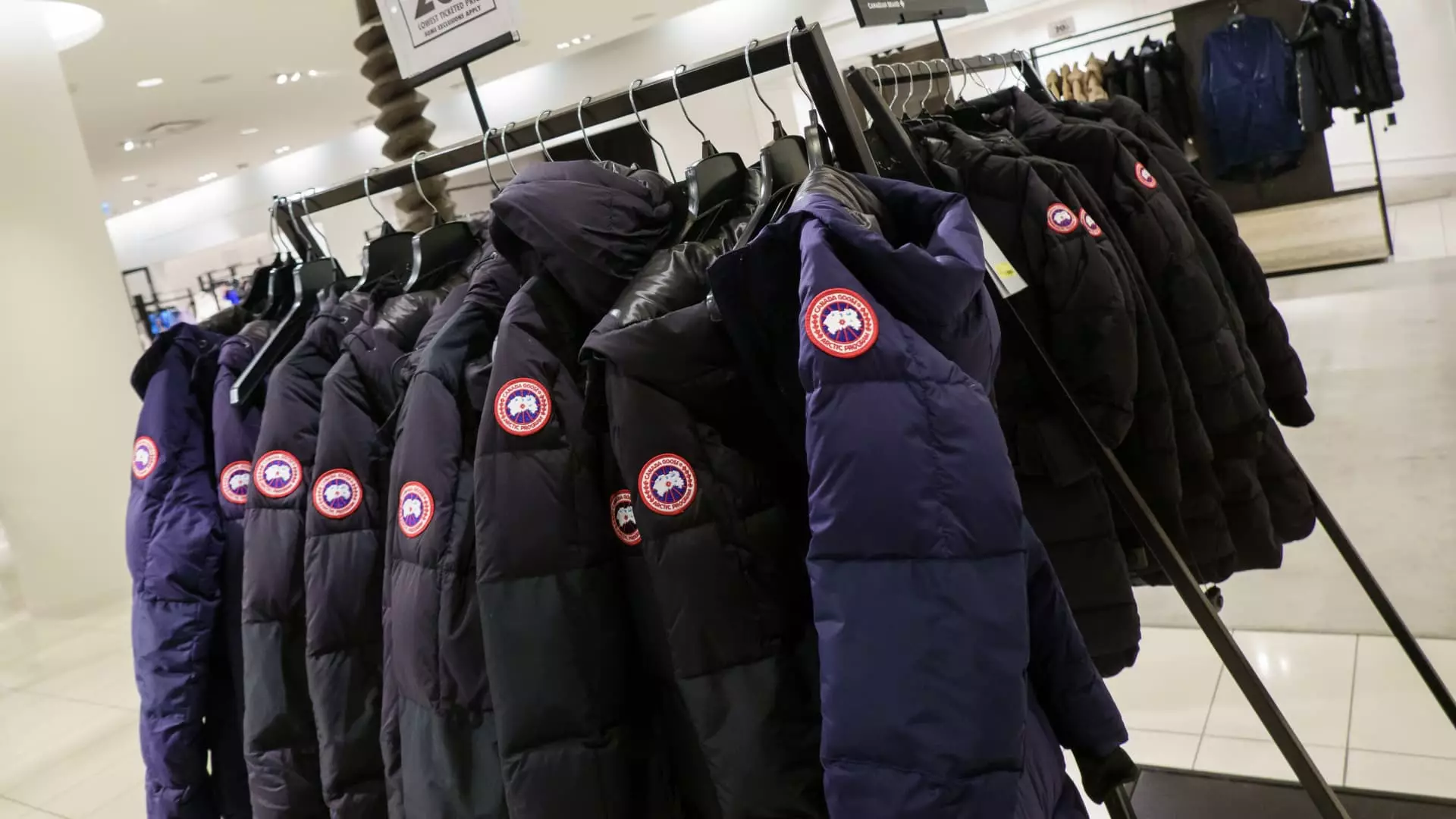The luxury retail sector has always been a fascinating playground for investors, characterized by its relentless highs and harsh lows. Recent movements in the shares of Canada Goose illustrate this phenomenon perfectly. A remarkable 20% spike in their stock price following better-than-expected fourth-quarter earnings brings both excitement and apprehension. Yes, the numbers paint a picture of resilience: earnings per share reaching 33 Canadian cents against expectations of 23, and revenue swelling to CA$384.6 million, exceeding forecasts. Yet, amidst this euphoria, the decision to pull back on fiscal 2026 outlook due to ‘macroeconomic uncertainty’ reveals an undercurrent of volatility that many investors might overlook.
Uncharted Waters: The Impact of Macroeconomic Factors
The decision to refrain from setting a fiscal outlook is particularly telling. Canada Goose’s leadership cites “dynamic consumer spending patterns” as a key driver of uncertainty — a phrase that, while innocuous on the surface, echoes the unpredictability plaguing economies globally. We exist in a time where inflation, geopolitical strife, and shifting trade policies create a minefield for businesses. The brand’s COO, Beth Clymer, highlighted that 75% of their products are manufactured in Canada and are thus sheltered from tariffs imposed by the United States-Mexico-Canada Agreement. While this is reassuring, the overarching question remains: how long can Canada Goose ride this wave of favorable conditions?
While the company touts its strong financial standing and adaptability, the cautionary tone disrupts the otherwise celebratory narrative. The statement about previous challenges faced — from the Great Recession to the disruptions caused by COVID-19 — casts a shadow on the 2026 fiscal predictions. The pride in having emerged stronger has a double edge; it reminds stakeholders of a turbulent past that could very well repeat itself.
A Brand’s Identity and Consumer Behavior
Known primarily for its high-end parkas and puffer jackets, Canada Goose is embarking on a risky yet potentially exhilarating venture into non-winter categories. The introduction of rain jackets and warm-weather apparel represents a significant pivot for a brand synonymous with winter wear. This bold endeavor to establish year-round relevance could either cement Canada Goose’s position as an adaptable luxury brand or create confusion inconsistent with its established identity.
The launch of an eyewear collection that leverages artificial intelligence for virtual try-ons underscores Canada Goose’s innovative push to engage customers in new ways. It is progressive thinking, but one must wonder: is the shift a necessary evolution, or is it a sign of desperation? In a climate where luxury brands like LVHM and Kering report slowing sales, this diversification strategy appears to be more of a survival tactic than a sign of robust growth. The question lingers — are consumers eager for what Canada Goose is offering, or will they remain loyal to the tried-and-true winter staples?
The Broader Luxury Landscape Challenges Canada Goose
The broader slowdown observed in the luxury market cannot be ignored. Market giants are feeling the strain, and Canada Goose’s once-cheerful path may not be immune to the malaise affecting its peers. With the luxury sector undergoing cyclic challenges, the optimism surrounding a few positive earnings calls may prove to be shortsighted. As the company attempts to broaden its product offerings, it runs the risk of diluting brand value, ultimately alienating its core customer base.
Moreover, the aggressive expansion strategy poses serious implications for inventory risks, particularly as the brand navigates the waters of economic uncertainty. It is a balancing act — on one side, a need for growth, and on the other, the potential for overextension that threatens the very fabric of the company’s identity.
Amid these ideological and practical challenges, the reality remains: Canada Goose’s stock surge may reflect an inherent resilience but is equally a signal of the precarious state of the luxury retail landscape. Investors cautiously watching from the sidelines may be forced to reevaluate their positions as they navigate this landscape filled with fleeting gains and lurking uncertainties.


Leave a Reply